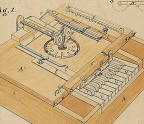Final Frames

On the afternoon of Thursday, September 6, 1901, President William McKinley was in Buffalo, New York, shaking hands with well-wishers at the Pan American Exposition when an assassin shot him. The gunman, an unemployed factory worker, had been following McKinley for two days. Gravely wounded, McKinley fought for eight days to stay alive. The president’s much-ballyhooed presence at the inland port had attracted numerous camera wielders, professional and amateur. After McKinley died many of those photographers believed they had made the last exposure before the fatal moment.
Photography had come a long way. In 1827, when Joseph Nicéphore Niépce made a study of a street in Saint-Loup-de-Varennes, France, that he titled Le point de vue du Gras (“View from the Window at Les Gras)”, his camera’s shutter, which made an image by letting light strike photosensitive material, had had to stay open for hours; anything in frame that moved appeared in the resulting print as a blur. Over decades exposure times shrank to minutes, but photographic portraitists’ subjects still had to keep deathly still, sometimes using armatures. As early as the 1850s, however, leaps in technology and technique were making possible faster exposure times and more natural-seeming images. Thomas Skaife’s Pistolgraph pioneered the concept that smaller lenses and image areas, requiring less light, could further shrink exposure times. Skaife’s use of wet plates and smaller negatives had this effect. His camera suggested a handgun, with the lens for a barrel, a resemblance said to have caused his arrest while he was attempting to photograph Queen Victoria with a Pistolgraph. Loading and processing glass and metal plates and sheet film, which required noxious solutions and total darkness, remained cumbersome and costly. Plates had to be inserted and removed from the camera one by one and, until processed, always shielded from light.
In 1884, George Eastman of Rochester, New York, invented roll film, which, when fitted into an apparatus within the camera, advanced mechanically from one exposure
You’re reading a preview, subscribe to read more.
Start your free 30 days





